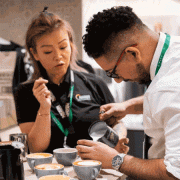WHEN AND HOW WILL COVID-19 LOCKDOWNS BE LIFTED?
The three tests Australia will need to pass before the coronavirus restrictions end
Australia’s effort to slow the spread of coronavirus is working and has led to hopes restrictions might soon be lifted and life will return to normal. But the Health Minister has outlined the three tests Australia would have to pass before the restrictions end.
Test one: A sustained decrease in cases
Health Minister Greg Hunt said authorities were “actively planning the road out” and the first test would be a further fall in COVID-19 cases in Australia. Australia has so far managed to flatten the infection curve, recording fewer than 100 new cases a day for the past week — well down from weeks ago.
But further falls in cases are needed.
Test two: Rapid response capabilities
In recent weeks, Australia has been frantically trying to increase the number of ventilators available for intensive care units across the country. It wants to ensure that if there is a sudden surge in cases, hospitals will have the resources they need to treat patients.
Mr Hunt said leaders needed to be satisfied that if there was a localised spike in cases, then health workers would be well placed to respond, contain and isolate the infected people.
Test three: An exit plan
Mr Hunt confirmed the Government was working on a plan for the “steps out”, which would involve gradually reopening businesses. The Prime Minister has flagged that some states and territories might start to reopen businesses ahead of others.
So, what will the “steps out” of restrictions look like?
Some debate is starting to occur on what is likely to reopen and how it will be managed. The government is meeting with advisors later this week to begin discussions but have already highlighted they will look to other countries for ideas. For the hospitality industry in Australia there may well be a return to the 1 person per 4 square meters restrictions that were in place the week before lockdown as a start.
Here’s an article that describes some other options:
Coronavirus Australia: When will lockdowns be lifted?
From an “immunity passport” to a “traffic-light system”, health authorities and scientists around the world are grappling with how to return to life after coronavirus lockdowns. Australian leaders believe social distancing measures have worked to “flatten the curve” at home, even though they remain concerned about unknown sources of community transmission.
But with a glimmer of hope on the horizon, thoughts are now turning to the delicate matter of how to remove the severe constraints on public life without sparking a surge in new cases that could overwhelm intensive care departments.
Several European countries have so far floated the problematic and scientifically unproven idea of using blood tests to roll out an “immunity passport” that could allow those with antibodies for coronavirus (so those that have had it) being given permission to return to work.
UK Health Secretary Matt Hancock recently spoke of an “immunity certificate” or “wristband” at a press conference after he recovered from the disease.
“People who have had the disease have got the antibodies and then have immunity can show that and therefore get back as much as possible to normal life,” he said. “That is something we will be doing and will look at, but it is too early in the science … to be able to put clarity around that.”
In Germany, one study involves 100,000 antibody tests to residents in the coming weeks that could eventually allow people to venture out of their homes.
“The immune system could be given a type of vaccination card that, for example, allows them to be exempted from restrictions on their work,” said Gerard Krause, the epidemiologist leading the study from Helmholtz Centre for Infection Research in Braunschweig, according to Der Spiegel.
Italy is debating a similar proposition with testing expected to play a key role in a return to normality and suggestions of a “COVID pass” touted by former prime minister Matteo Renzi.
In Austria, Chancellor Sebastian Kurz has already said restrictions could begin to ease from April 14 with small shops under 400 square metres, hardware stores and garden centres allowed to open under strict conditions. If that goes according to plan, larger shops could open from May 1 and hotels and other services including schools from mid-May. Large events will remain banned until the end of June.
If infections spiked again, the government could “hit the emergency brake” and reintroduce restrictions, he said.
Danish Prime Minister Mette Frederiksen said the country would reopen kindergartens and primary schools for pupils aged up to 11 from next week. Restaurants, bars and cafes will remain closed for now, while churches, libraries, sports venues and shopping centres will remain closed until May 10. Gatherings of more than 10 people will be banned until May 10 and the lockdown could be reversed if infections spike.
THE AUSTRALIAN EXPERIENCE
Prime Minister Scott Morrison has already said social distancing is set to last for six months and potentially longer in Australia with no clear way out of the crisis.
“It is clear the epidemiology curve is beginning to flatten. But it is still too early to determine whether such movements will be significant or sustained. That’s why it’s important that all Australians continue to adhere to the social distancing measures,” he said on Tuesday.
TRAFFIC LIGHT SYSTEM
A recently published paper by British economists Gerard Lyons and Paul Ormerod suggested a “traffic-light” system with different activities allowed in different stages that could ease rules.
The authors noted that while they supported the current lockdown in the UK, a long lockdown would “wipe out large swathes of the economy”.
Instead, they believe people will behave differently after the crisis and a phased re-entry to normal life would prevent a surge of demand for services and provide hope for cooped up residents.
“We would go, first, from lockdown to red, where we must still stop doing things we might have done before the crisis. Then to amber, as conditions improve, but we still need to be careful. Eventually, back to green, when medical experts can give the all-clear,” the authors state in the paper.
“This process also gives hope. The first phase would deliberately be called red to ensure people stopped to think before they did things. More – but not all – types of shops could open, and they would have to exercise strict social distancing, as most supermarkets do now. Many might choose not to reopen, for commercial reasons, as demand would be low.
“In the amber phase, unlimited private car journeys should be allowed. People may in fact substitute this for public transport. In order to minimise pressure on public transport, and crowds, there would have to be attempts to vary the rush hour, with different opening and closing times. Wearing masks and disposable gloves could be compulsory when using public transport. Restaurants could reopen but with strict seating demarcations to uphold social distancing.
“It would only be in the green phase that sporting events or mass gatherings could take place or places of worship reopen. It is in large gatherings that a single person may infect many. Mass transit could return to normal.”
Murdoch University Pro-Vice Chancellor for Health Sciences and director of Australia’s National Phenome Centre, Professor Jeremy Nicholson, said much in Australia depends on what happens in Victoria and New South Wales in the next few weeks.
“If it really takes off like in Italy and the UK, then we’re in lockdown for a long time. If the curve is really flattened in Australia then maybe once the other states start to get low case rates it will free up the boundaries,” he said.










